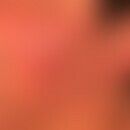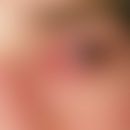DefinitionThis section has been translated automatically.
T-cell immunodeficiency, congenital alopecia and nail dystrophy , or TIDAND, is an autosomal recessive primary immunodeficiency associated with mutations in the FOXN1 gene and characterized by congenital thymic aplasia and severe T-cell immunodeficiency.
ManifestationThis section has been translated automatically.
Already at birth or shortly thereafter.
You might also be interested in
ClinicThis section has been translated automatically.
Affected individuals are prone to recurrent infections, oral candidiasis, and failure to thrive.
LaboratoryThis section has been translated automatically.
Immunological studies show a decreased number of T cells with a poor proliferative response to phytohaemagglutinin (PHA) and variable hypogammaglobulinemia. The phenotype is consistent with a T-/B+/NK+ form of severe combined immunodeficiency .
TherapyThis section has been translated automatically.
Patients with FOXN1 mutations do not respond well to hematopoietic stem cell transplantation because it is not curative. Thymus transplantation offers a potential cure (Chou et al. 2014).
LiteratureThis section has been translated automatically.
- Adriani M et al (2004) Ancestral founder mutation of the nude (FOXN1) gene in congenital severe combined immunodeficiency associated with alopecia in southern Italy population. Ann Hum Genet 68: 265-268.
- Amorosi S et al (2008) FOXN1 homozygous mutation associated with anencephaly and severe neural tube defect in human athymic Nude/SCID fetus. Clin Genet 73: 380-384.
- Chou Jet al. (2014) A novel mutation in FOXN1 resulting in SCID: a case report and literature review. (Letter) Clin. Immun. 155: 30-32.
- Flanagan SP (1966) 'Nude,' a new hairless gene with pleiotropic effects in the mouse. Genet Res 8: 295-309.
- Radha Rama Devi A et al.(2017) FOXN1 Italian founder mutation in Indian family: implications in prenatal diagnosis. Genes 627: 222-225.
Disclaimer
Please ask your physician for a reliable diagnosis. This website is only meant as a reference.




